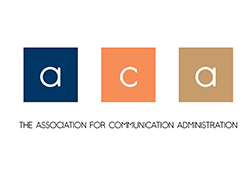Abstract
The article suggests addressing communication competence from a perspective outside the behavioral orientation to communication. Dialogue presupposes both the general public and the academy meeting one another in serious conversation about educational assessment. Ignoring assessment will not make persistent calls for accountability disappear. The routine use of negation of authority leads the way for a powerful enemy to take the public stage from the spectators who by that time have confused the critical life of a spectator with active participation in the culture for too long. Assessment is an inescapable part of the evaluation process. How to determine when communication praxis is occurring? The first step in narrative assessment is to ask students to identify practices from the workplace. The second step is to discuss communication theory that can be applied to the observed practices. In this phase, the student connects theory to the practice in order to generate a theory-laden understanding .In the third step, practice is translated into praxis (theory informed action).
Recommended Citation
Arneson, P., & Arnett, R. C. (1998). The praxis of narrative assessment: Communication competence in an information age. Journal of the Association for Communication Administration, 27(1), 44–58.


